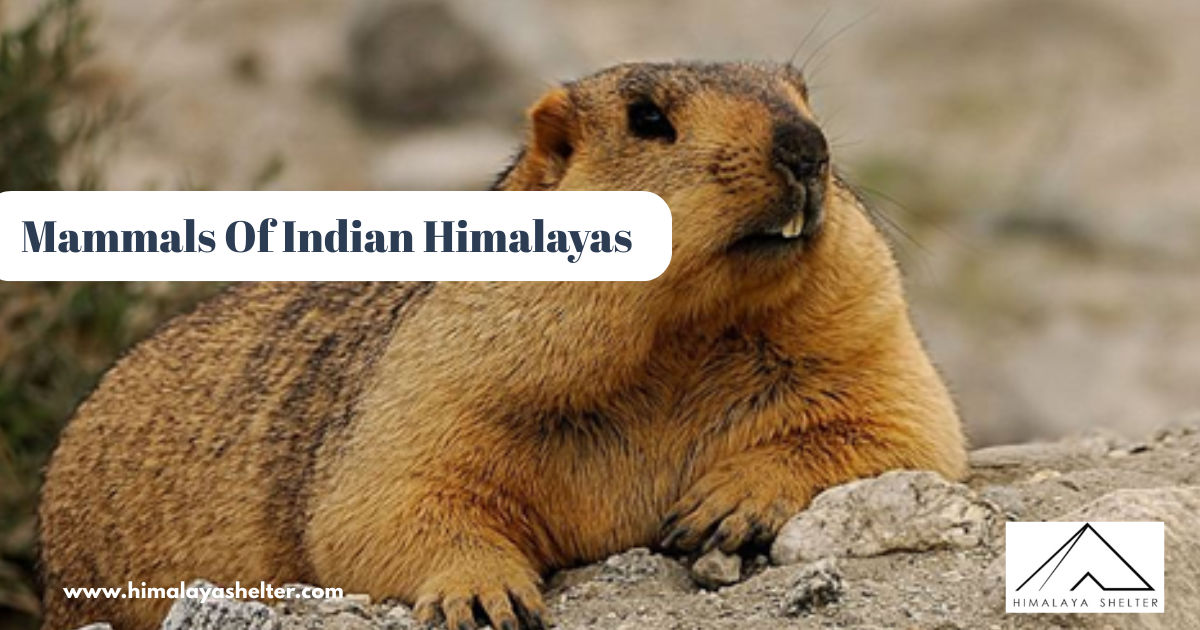
Mammals Of Indian Himalayas :
When one talks about “The Himalayas”, it’s hard not to be curious of one of natures Masterpieces. Himalayas have managed to intrigue us humans ever since they have existed. Magnificent, Grand, Heavenly, serene, robust and calm, these Himalayan ranges have been a home to many flora and fauna that thrive only on their altitude and climate. Himalayan fauna includes a wide variety of mammals that are specific inhabitors to this region. The Himalayan ranges span across five countries, one of which is India. The Indian Himalayas house some spectacular mammals like Blue Sheep, Barking Deer, Goral, Tahr, Marmot, among many others. These mammals are prey for common leopards, ( in the forest zone) and Snow leopards(above tree line).Himalayan black bears inhabit the forests, while Asiatic brown bears are found in the Alpine meadows.
Himalaya proudly flaunts the world’s highest peak on Earth i.e. Mount Everest, which is cold throughout the year. Most of the animals at Himalaya have thick skin and heavy body with phenomenal instinct that helps them protect their lives even in most arctic atmosphere.
For Trekkers who love to explore the landscape of these challenging Himalayan terrain, encountering some interesting mammals is just a part of the heavenly experience. Here is a list of five Himalayan mammals you are sure to encounter on your trekking expeditions in the Indian Himalayas.
Himalayan Marmot
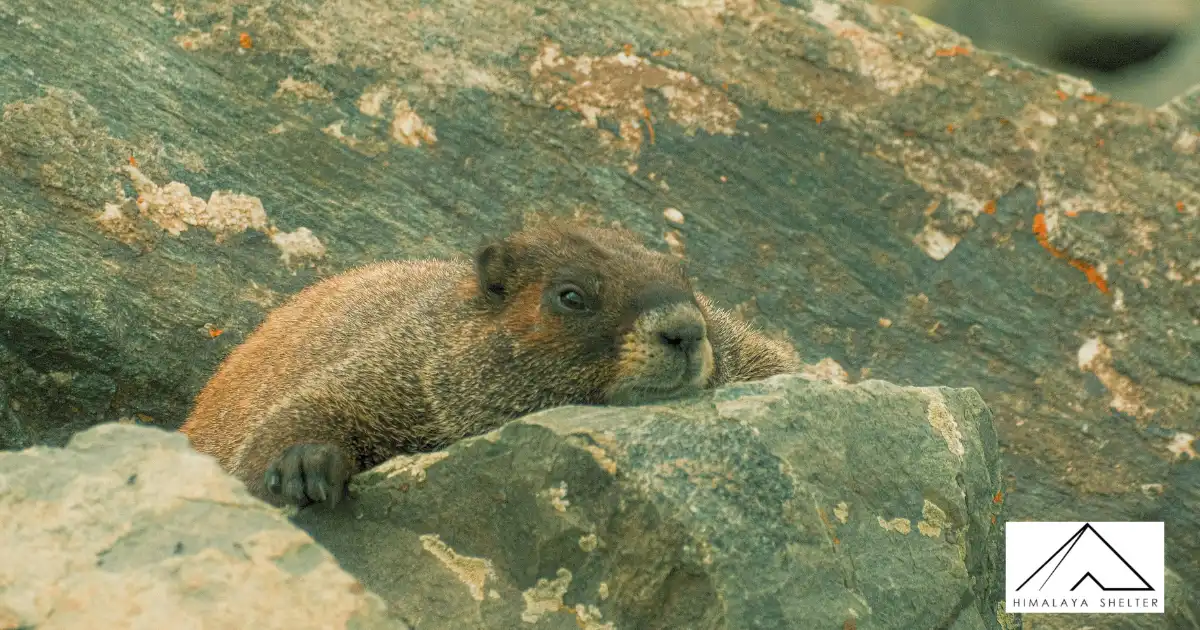
This cute little mammal, resembles a large version of the ground squirrels. Marmots area quite social in approach and like to live in colonies of varying sizes. Found in the Himalayan regions of India, Nepal, and Pakistan, Marmot is one of the highest elevation-dwelling mammals in the world. They are herbivores in nature and prefer flowering plants such as leaves, roots, tubers, seeds, grains, nuts, and fruits. While there are 14 species of marmots in the world, only two species are found in India in the Leh-Ladakh stretch, one is the long-tailed marmot and the other is the Himalayan marmot.
Driving out of Leh, marmots can be seen close to the Khardung-La Pass at 17, 582 feet or near the Chang-La Pass at 17,500 feet on the way to the Pangong Lake. They can also be sighted in the vast flatlands around Tso Moriri Lake, in the Zanskar range and other locations that are conducive for the marmots to hibernate in burrows and also have ample food.
Marmots are also called as Tibetan snow pigs, as they burrow deep under the rocks and live mostly on ground vegetation, roots, shoots and berries. Above 17,000 feet, plant life almost disappears, making it virtually impossible for any mammalian life to survive yet the marmots survive this tough life quite easily.
Himalayan Tahr
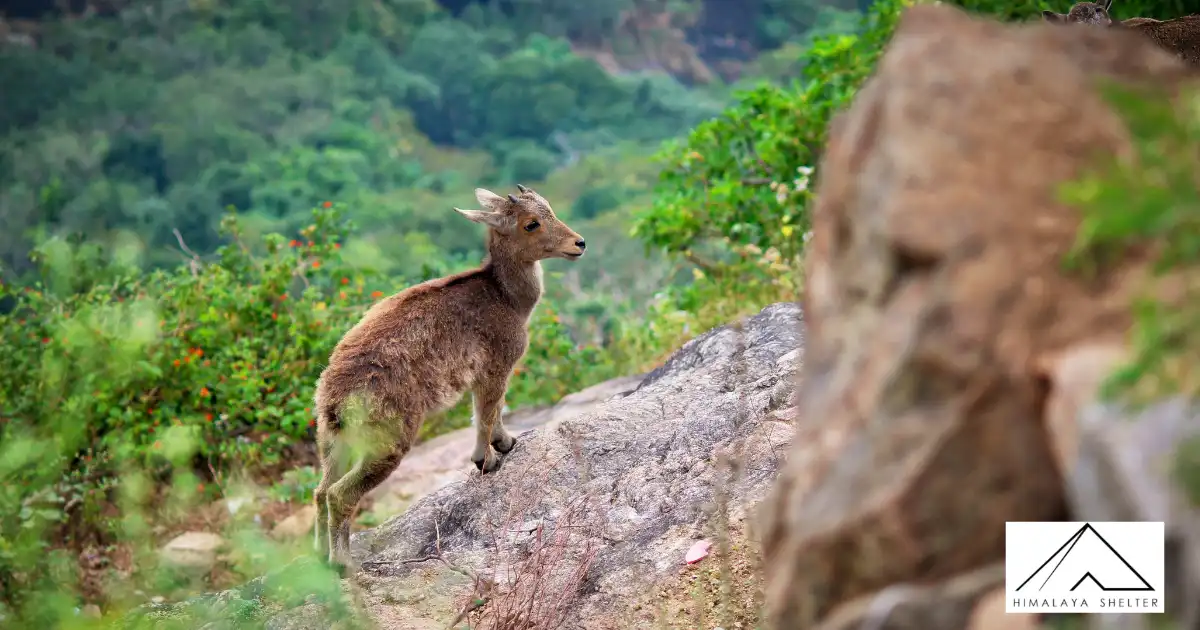
A small head, small pointed ears, large eyes, and horns are characteristics of an Himalayan tahr. Their horns reach a maximum length of 46 centimetres (18 in). The exterior of a tahr is well adapted to the harsh climate of the Himalayans. They sport thick, reddish wool coats and thick undercoats, indicative of the conditions of their habitat. Their coats thin with the end of winter and becomes lighter in color. The shedding is an adaptation that allows their internal body temperatures to adjust to the harsh temperatures of the Himalayan Mountains.
As a member of the ungulate group of mammals, the Himalayan Tahr possesses an even number of toes. They have adapted the unique ability to grasp both smooth and rough surfaces that are typical of the mountainous terrain on which they reside. This useful characteristic also helps their mobility. The hooves of the Tahr have a rubber-like core which allows for gripping smooth rocks while keratin at the rim of their hooves allow increased hoof durability, which is important for traversing the rocky ground. This adaptation allows for confident and swift maneuvering of the terrain.
They are usually cited, in Tirthan Valley of the Great Himalayan National Park, Kumaun such as Kedarnath Wildlife Sanctuary, and Nanda Devi National Park.
Himalayan Goral
The Himalayan goral has a gray or gray-brown coat with tan legs, lighter patches on its throat, and a single dark stripe along its spine. Himalayan gorals are found in the forests of the Himalayas including Bhutan, northern India including Sikkim and Arunachal Pradesh, Nepal, southern Tibet, and possibly western Myanmar. They inhabit most of the southern slopes of the Himalayas from Jammu and Kashmir to eastern Arunachal Pradesh. In India and Nepal they are present at elevations from 900 to 2,750 m (2,950 to 9,020 ft).
The brown goral is a small brown goat antelope. Shaggy, brownish grey in winter to a sleeker greyish brown in summer. I t has a white upper throat patch and white spots on its muzzle. Its horns are short, ridged and backward pointing, and thinner in females. A dark dorsal band extends to the tail. The under parts ate pale brown and the legs are bright brown with white flecking on the forelegs just above its black hooves.
Himalayan gorals can be spotted at various interesting trekking routes like the Trithan Valley, Evererst Base camp, Rara Lake trek and many areas of Himachal Pradesh.
Himalayan Blue Sheep (Baral)
Bharal also known as the Himalayan Blue Sheep, are found in the high Himalayas of India, Nepal, Bhutan, Tibet, Myanmar, and Pakistan. They live in open grassy slopes in high mountains and are usually found near cliffs but try to avoid forested areas. These animals are tolerant of extreme weather conditions and can be found from desert mountains in searing heat to windy and cold slopes. Bharal are social animals and their herds usually range from 5 to 400 individuals.
Bharal have a short, dense coat that is slate grey in color, sometimes with a bluish sheen. The underparts and backs of the legs are white, while the chest and fronts of the legs are black. Separating the grey back and white belly is a charcoal coloured stripe. The ears are small, and the bridge of the nose is dark. The horns are found in both sexes, and are ridged on the upper surface
Since the Blue sheep are not found in the forest areas trekkers can encounter them in treks like the Annapurna sunrise trek and mount Everest base camp among the most popular ones. They are relatively common in many areas of eastern Ladakh (Jammu and Kashmir), and in parts of Spiti and the upper Parbati valley in northern Himachal Pradesh. Bharal are known to occur in the Govind Pashu Vihar Wildlife Sanctuary and Nanda Devi National Park, and near Badrinath (Uttar Pradesh), on the slopes of the Khangchendzonga massif (Sikkim), and in eastern Arunachal Pradesh.
Alpine Musk Deer
Well-developed dew claws, broad toes that provide increased stability on steep slopes, and a dense coat of coarse hairs with air-filled cells to insulate against the extreme temperature. The species is nocturnal, crepuscular, and elusive, making direct observation of habitat use and behavior difficult. The general colour of the coat, composed of brittle hairs, is a slightly grizzled sandy brown. As the name suggests, on the chest is a wide vertical whitish-yellow stripe which extends up the throat to the chin. The ears are tipped with yellow or orange hairs. On the nape of the neck are several horizontal blotches of yellowish hairs.
During the day Himalayan musk deer hide in the forest. They come out at dusk into open areas and graze till dawn. They live as couples in the same home range all their lives. Males scent-mark their territories by rubbing their tail gland against trees and stones.
In the Himalayas, the animals range extends in parts up to the tree line at an altitude of 4200 m, but in the northern parts of their range, Musk deer may occur at much lower altitudes.
About Author

Meenakshi Chauhan
Recent news
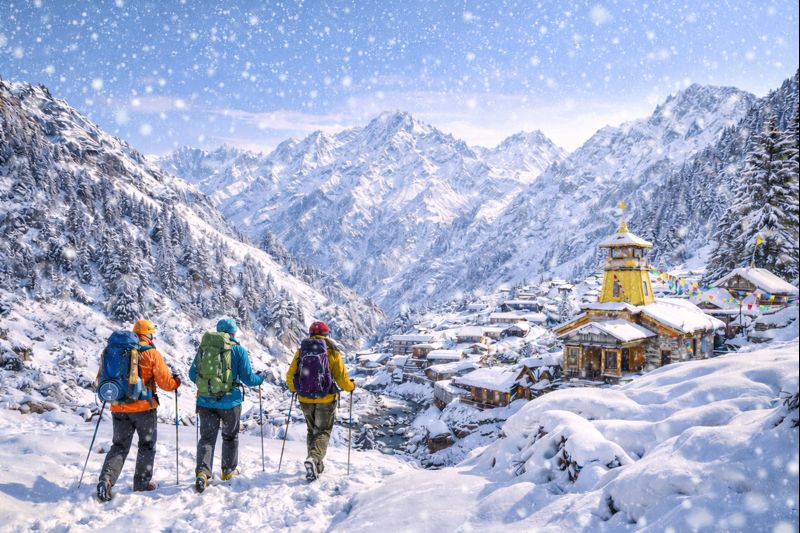
03 Jan 2026

23 Dec 2025
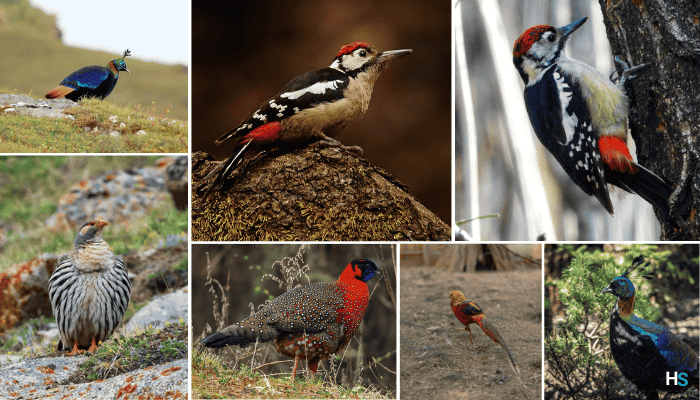
20 Dec 2025
Recommended Treks

Cost: ₹11,299 | $125.46
Type: Easy
Best Time: Jan | Feb | Mar | Aprill | May | Jun | Sep | Oct | Nov | Dec

Cost: ₹9900 | $114
Type: Easy
Best Time: April to June and September to November
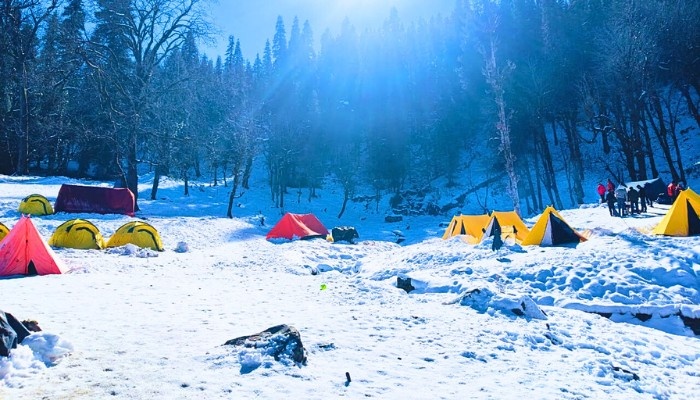

Cost: ₹11000 | $130
Type: Moderate
Best Time: May to June and September to November




